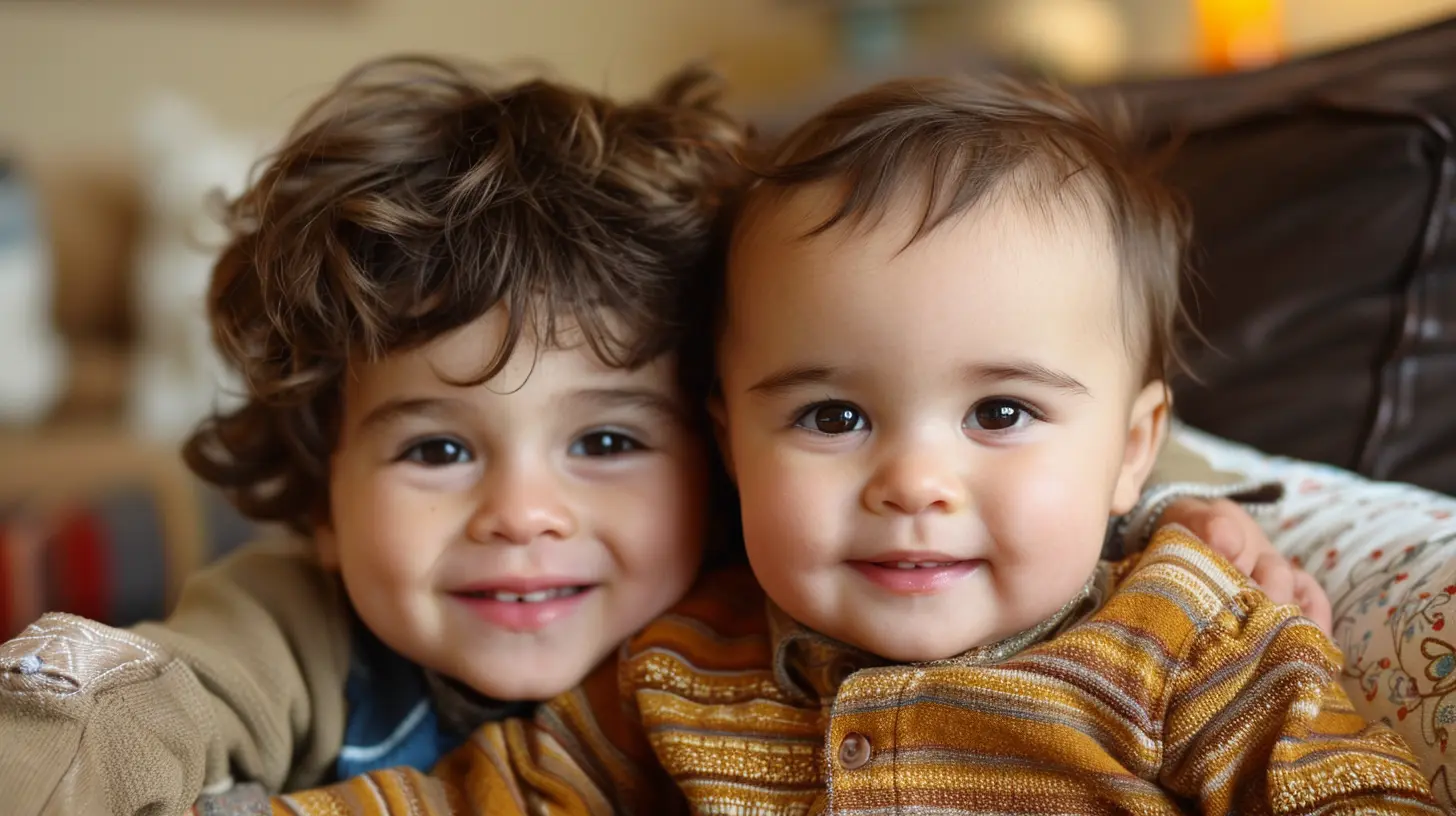Nurturing Sibling Relationships: From Rivalry to Friendship
21 November 2025
When you picture siblings, what comes to mind? Is it heartwarming images of kids laughing, sharing secrets, and tagging along together? Or is it something a little closer to reality—a mix of squabbling over toys, side-eye at the dinner table, and competing for the last cookie? Sibling relationships can be a rollercoaster, can’t they? One minute, your kids are thick as thieves, and the next, they’re arguing like sworn enemies.
But here’s the good news: sibling rivalry doesn’t have to define their relationship. As parents, we have the unique opportunity to shape how our kids relate to each other. With some effort, patience, and a sprinkle of creativity, we can help turn sibling rivalry into lifelong friendship.
Let’s dive into how you can foster those bonds and make “family” something they cherish.

Why Siblings Fight: The Root of Rivalry
First off, let’s not sugarcoat it—conflict is pretty much inevitable when you have more than one child. But why do siblings clash so much? Well, imagine living with someone who’s in your space 24/7. They borrow your stuff, get on your nerves, and sometimes steal the spotlight. Sounds a bit frustrating, right?Here are some of the common reasons behind sibling rivalry:
1. Jealousy and competition
Kids often compete for your attention, praise, or even the biggest slice of pizza. When one child feels like they’re getting the short end of the stick, resentment can quickly bubble up.
2. Developmental differences
Ever tried reasoning with a toddler about why their older sibling gets to do “cool big kid things”? It’s like explaining quantum physics to a puppy. Kids at different stages of development just see the world differently, which can lead to misunderstandings.
3. Personality clashes
They might share DNA, but your kids aren’t carbon copies of each other. Different personalities can mean opposing interests, temperaments, and communication styles.
4. Lack of problem-solving skills
Let’s face it—kids aren’t born knowing how to compromise or resolve disputes calmly. (Heck, most adults aren’t great at it either.)
Understanding why they fight is the first step. Now let’s talk about what you can do to help them move past it.

The Parent’s Role: Setting the Stage for Friendship
As parents, we’re kind of like referees in the game of sibling relationships—but with a lot more power to influence the rules. Here’s how you can foster a healthy, loving dynamic between your kids:1. Be a Role Model
Kids learn from what they see, not just what you say. If you want your children to treat each other with kindness, it starts with you. Do you show empathy, apologize when you’re wrong, and communicate respectfully? Your example lays the groundwork for how they’ll interact with each other.Think about this: If you frequently snap at your spouse or dismiss your kids’ feelings, they’ll likely mimic that behavior. Instead, model patience and compassion—even when it’s tough.
2. Treat Them Fairly, Not Equally
Here’s a harsh truth that can be hard for kids to grasp: fairness doesn’t always mean treating everyone the same. Each child is unique, with individual needs and strengths.If an older sibling gets to stay up later because they’re in middle school, explain why. If a younger sibling gets more cuddles because they’re feeling anxious, don’t shy away from addressing it. When kids understand that your goal is to meet their specific needs—not to play favorites—they’ll feel less threatened.
3. Encourage Teamwork
Ever noticed how kids bond effortlessly when they’re taking on a common “enemy” (like when they’re pranking Dad or blaming the dog for a mess)? Use that natural tendency to build teamwork.Give them opportunities to collaborate, whether it’s solving a puzzle, building a fort, or baking cookies together. When siblings work as a team, they learn to rely on each other, which fosters trust and connection.
4. Teach Conflict Resolution
Kids aren’t born knowing how to “talk it out.” It’s a skill they have to learn—and parents are the best teachers.The next time an argument breaks out, resist the urge to swoop in like a superhero and fix everything. Instead, guide them through these steps:
- Step 1: Take a breather. (Deep breaths or a short “cool-off” period can work wonders.)
- Step 2: Explain feelings. Encourage them to use “I” statements, like “I feel upset when you take my toys without asking.”
- Step 3: Brainstorm solutions. Let them propose ideas for resolving the conflict, whether it’s sharing, taking turns, or apologizing.
Pro tip: The more you practice this process, the easier it’ll get for your kids to handle conflicts on their own.
5. Celebrate Their Bond
Good relationships grow stronger when we focus on the positives. Make a big deal out of the moments when your kids get along. Compliment their teamwork, appreciate their kindness, and capture those candid moments of sibling love (yes, even the messy ones!).Did they spontaneously share a snack? Take a picture. Did your oldest help the youngest with homework? Give them a shoutout. These affirmations instill pride and reinforce those positive behaviors. 
Activities to Strengthen Sibling Bonds
Now for the fun part! Want to know some easy ways to bring your kids closer together? Try these activities that naturally build connection and camaraderie:1. Family Game Nights
Board games, card games, or even video games—anything that sparks laughter and teamwork. Just make sure to choose age-appropriate games to keep things fair.2. Sibling Date Days
Let each sibling take turns planning a special day with the other. Whether it’s a trip to the park or a movie marathon, these one-on-one moments can help siblings appreciate each other.3. Shared Journals
Encourage your kids to write (or draw) letters to each other in a shared notebook. It’s a simple way to help them express their feelings and build emotional intimacy.4. Acts of Kindness
Challenge your kids to surprise each other with small acts of kindness—like making each other’s bed or sharing a favorite toy.5. Family Traditions
From Sunday pancake breakfasts to holiday movie nights, rituals bring the whole family together. They create cherished memories and remind siblings that they’re part of something bigger.
When to Step In (And When to Step Back)
It’s tempting to jump in every time your kids argue, but constant intervention can actually backfire. Kids need to learn how to navigate their own conflicts—with your guidance, of course.However, there are moments when stepping in is necessary, especially if things escalate to physical aggression or emotional harm. In those cases, calmly separate the kids, address the behavior, and guide them toward resolution.
Remember, your goal isn’t to eliminate conflict entirely (spoiler alert: that’s impossible). It’s to teach your kids how to handle disagreements in a healthy, respectful way.
The Long-Term Payoff: A Friendship for Life
Here’s the thing: sibling relationships are long-term. They’ll outlast childhood milestones, teenage mood swings, and even the inevitable distance of adulthood. The bonds you nurture now will follow them for the rest of their lives.Sure, there will be bumps along the way. But with your love, encouragement, and a little bit of patience, you’re setting the stage for something beautiful—a friendship between siblings that stands the test of time.
Because at the end of the day, isn’t that what family is all about?
all images in this post were generated using AI tools
Category:
Parenting SupportAuthor:

Kelly Snow

